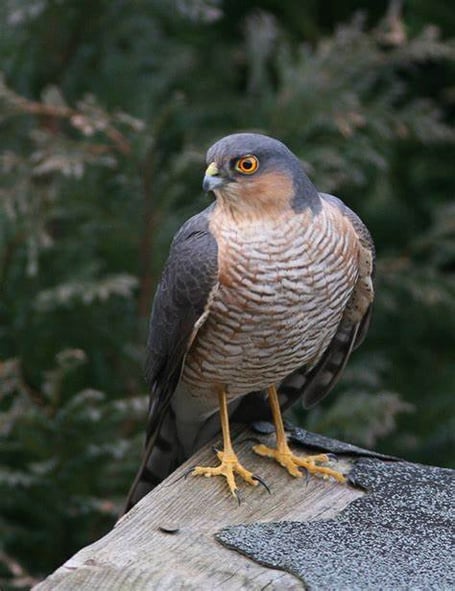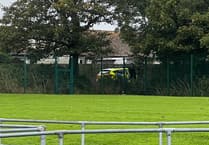When you find an injured wild animal or bird, it is usually best for you to take it to your nearest veterinary practice for emergency treatment.
The veterinary profession’s code of practice means that they will provide this treatment free of charge, and a vet will either euthanise the animal or bird if its injuries are extensive, or stabilise it and ask us (or Manx Wild Bird Aid) to collect it.
We will then rehabilitate it, keeping human contact to a minimum, and release it back into the wild as soon as we can – ideally as close to its original location as possible.
So, when a gentleman came into our main reception here at Ard Jerkyll last week with a bird in a box, our hearts sank a little because ‘birds in boxes’ are usually ones that have been attacked by a cat, and then brought to the cat’s owner as a gift.
These birds have a very slim chance of survival, and there’s only so much we can do.
However, this was no ordinary bird – it was a female sparrowhawk (females have brownish underparts, whereas the males have grey ones).
She had been found in the middle of a road in Peel with no obvious sign of injury, and so we hoped she was simply concussed.
Female sparrowhawks are much bigger than their male counterparts, and so they are not as agile when hunting.
We think this female was probably in pursuit of a pigeon, and accidently crashed into a window.
We kept her in a dark, quiet place for several hours and thankfully she regained her balance, so that we were able to release her that evening back in Peel.
The sparrowhawk is seen in urban areas more commonly than any other bird of prey.
March and April are the months when food supplies are at their lowest, and adult sparrowhawk mortality is at its highest – about a third of adults die each year with the most common cause being starvation.
Their life expectancy is less than three years, whereas most other species of birds of prey live considerably longer.
When spotting a sparrowhawk predating smaller birds our first impulse may be to protect the ‘victim’ by frightening off its attacker, but spare a thought for the hawk.
Some people worry that sparrowhawks eat too many small birds and cause their populations to fall or even become endangered.
Emotions can cloud the fact that the scientific research points to the contrary and long-term scientific studies have shown that sparrowhawks generally have no, or little, impact on garden bird populations.
A study conducted by the British Trust for Ornithology and funded by Songbird Survival looked at the relationship between populations of sparrowhawk and prey species over a period of 33 years.
This study concluded that for the majority of garden bird species (not least sparrows!) there is no evidence that increases in sparrowhawk numbers are associated with their population declines.
It is also clear that most species declines are due to factors such as loss of habitat and the use of pesticides.
A sparrowhawk stealthily hunting its prey in our back gardens might be difficult for some people to watch, especially if there is a lengthy chase amid the shrubs and bushes before the final kill, but this is the stark reality of nature.
What’s not so easy to accept is garden bird predation by domestic cats who don’t hunt and kill because they’re hungry, but because it’s part of their natural instinct.
It’s estimated that 27 million birds are killed every spring and summer in the UK by cats.
If this is a major concern for you, but you also like cats, then why not adopt an older cat who has given up hunting and prefers a quiet life, with very little exertion and food on demand?
We have Casper and Rupert in our cattery at the moment who may just fit the bill.

.png?width=209&height=140&crop=209:145,smart&quality=75)



Comments
This article has no comments yet. Be the first to leave a comment.